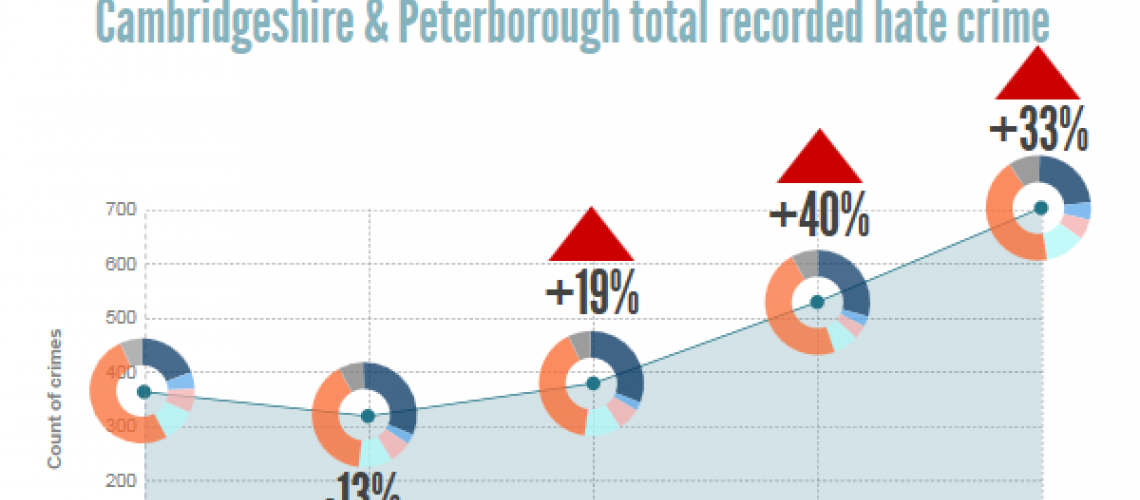Hate crime: are national increases being seen locally?

What is Hate Crime?
A hate crime is one which is “committed against someone because of their disability, gender-identity, race, religion or belief, or sexual orientation” (1). It covers a wide range of crime types including assault, harassment, and inciting others to commit hate crimes. Following the EU referendum on 23rd June, the Police experienced a 57% increase in national reporting of hate crime to their online reporting site between 23rd and 26th June compared to the same time 4 weeks before (2). This attracted widespread media attention including many cases, such as the fatal attack of Arkadiusz Jóźwik, a polish man in Harlow, Essex, making national news.
What’s happening locally?
This phenomenon permeated the UK with evidence of the trend appearing locally in Cambridgeshire and Peterborough. A report produced by Cambridgeshire Research Group using police data on racially aggravated crimes and crimes where a hate marker (3) has been applied found that, in June 2016, there were 92 cases of police recorded hate crimes in Cambridgeshire and Peterborough. This is not only twice the number recorded in the same month last year but also the highest monthly count seen in the area since recording of hate crime began in April 2011. The average number of police recorded hate crimes per month for the period July 2015–June 2016 was recorded as being over double the amount seen during July 2012–June 2013. More information can be found here.
What’s next?
National trends continued to rise following the referendum, all be it at a slower rate, but have now reportedly begun to return to levels comparable to last year. However, the UN has identified under-reporting of hate crime as a problem in the UK (4) and, with the government’s hate crime strategy aiming to increase reporting, levels may be expected to change in the coming future. Locally Community Safety Partnerships are working with the police to tackle hate crime and this increase in recorded cases actually allows greater insight into the problem. Prevention and supporting victims are key areas of work for these partnerships who continue to monitor the situation. Third party reporting (i.e. being able to report a crime to someone other than the police) is being trialled again within the County to enable even greater opportunities for data to inform decision making and victims to access support more easily.
Resources
For further information, contact:
Cambridgeshire Research Group, Cambridgeshire County Council, Shire Hall,Cambridge, CB3 0AP.
Tel: 01223 715300
Email: research.group@cambridgeshire.gov.uk
Sources/Notes:
-
UK Government (2016) Report Hate crime: https://www.gov.uk/report-hate-crime ↩
-
National Police Chief’s Council (2016) Hate crime is unacceptable in any circumstances say police: http://news.npcc.police.uk/releases/hate-crime-is-unacceptable-in-any-circumstances-say-police. ↩
-
Markers are applied to any crime where the victim or witness perceives that the crime was motivated by or was associated with hate for the victim based on a protected characteristic. ↩
-
The Guardian (2016) Lasting rise in hate crime after EU referendum, figures show: https://www.theguardian.com/society/2016/sep/07/hate-surged-after-eu-referendum-police-figures-show. ↩
